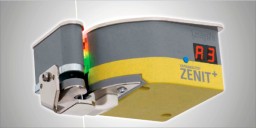
As per the latest report of Textile Exchange, a global non-profit organization that focuses on minimizing the harmful impacts of the global textile industry and maximizing its positive effects, Lindex is one of the world’s largest users of organic cotton, recycled polyester and more sustainable materials like Lyocell. Lindex’s 25 per cent of total assortment consists of organic cotton.
Also Read – Lindex Joins Canopystyle Campaign
“We continuously work to increase the share of fibres from more sustainable sources and are very proud of our progress. Our goal is that all our cotton should be more sustainable and that 80 percent of all our clothes come from more sustainable fibres by 2020. We have up till now reached a level where more than half our total assortment comes from more sustainable materials,” avers Anna-Karin Dahlberg, Production Support Manager at Lindex.
Lindex is also working towards the improvements in production processes in order to reduce the use of water, energy and chemicals besides increasing use of more sustainable materials. The European fashion chain has further reviewed the washing processes of its denim production and aims to work with more sustainable processes in future.

















